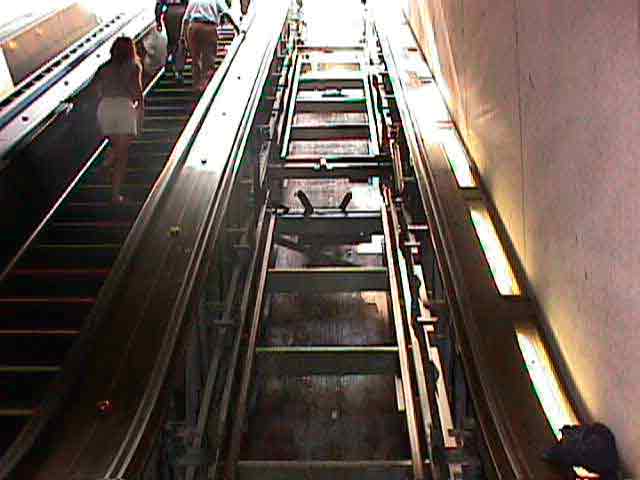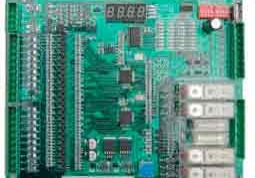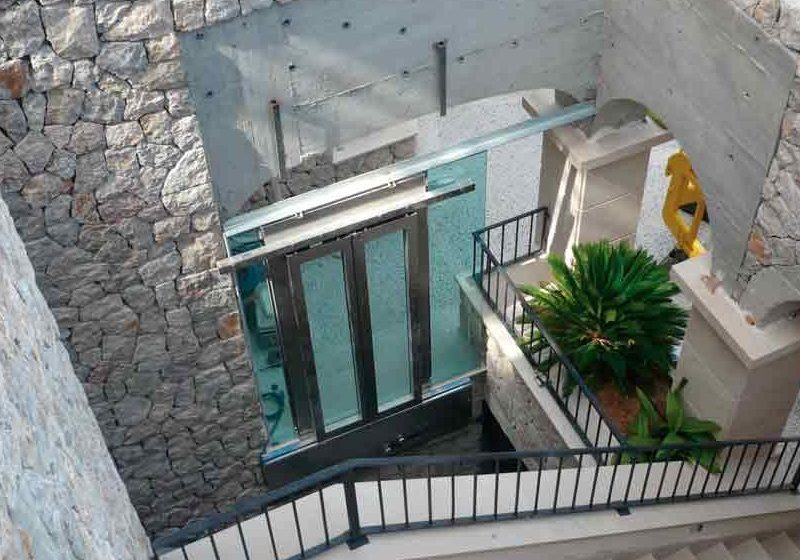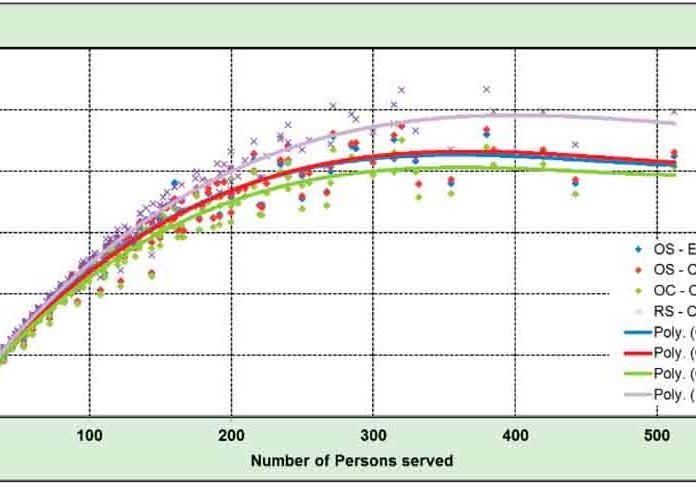Maintaining Elevators and Escalators in the Transit Environment, Part 2
Apr 1, 2013

In the first part of this article (ELEVATOR WORLD, December 2012), we discussed the challenges faced in transit systems. We will now see how this situation came about and how we can get out of it. Far too often, transit authorities within the U.S. have come to the realization that their equipment is not in a state of good repair. That realization can come from the result of internal audits, an outside consultant’s assessment or, worse yet, after an incident has occurred. This condition can usually be traced to a lack of proper technician training, inadequate and/or deferred maintenance, and repeated misuse and abuse, with no monitoring in place to ensure maintenance is being done and that proper remedial action is taken when required.
As we have noted previously, our transit systems are full of equipment that, in many cases, is more than 40 years old and subjected to extremes in exposure and continued misuse. In the early stages of their lifecycle, these units may have performed well, possibly by a good maintenance program and/or due to the fact the equipment was new and parts were not worn or greatly misaligned due to extended operational periods. That good initial operating period may have given planners and those responsible for capital budgets the incorrect impression that planned major upgrades or replacements of equipment could be postponed or that portions of those funds could be used for assets with poorer performance indicators. When major upgrades and replacements are deferred and equipment has been given less-than-adequate maintenance, a transit system can find itself in the same situation as many U.S. agencies: operating old equipment and keeping it running safely and continuously is both draining a minimal budget and attracting the disdain and protest from the local media and riding public.
Reversing this condition can be difficult, but it is possible if the following steps are taken:
- Make a commitment to access the current, realistic condition of the equipment and develop a plan to bring it up to a state of good operation and repair, while maintaining realistic expectations based on the findings of the assessment and the scope of the remedial work required.
- Institute a comprehensive and proactive maintenance program and ensure it is followed.
- Develop a detailed modernization and upgrade plan and keep it with the capital plan. Ensure it does not realistically exceed expected equipment life.
- Develop performance indicators to accurately assess and report the operating status of the equipment and modernization process.
- Maintain vigilant monitoring and oversight of maintenance and capital-improvement programs by an independent group.
All of the above are internal to the organization, but the most important aspect of the process is to partner with patrons and local media to promote awareness of what is being done and how any changes will affect them.
Assess the Condition of the Equipment
Knowing the current condition of each piece of equipment is critical in the process of developing a plan outlining what needs to be done and when it needs to be done. All elevators and escalators are governed by the code in force in their jurisdiction at the time of installation, along with any modifications or upgrades that may have been made along the way. Older equipment is not required to meet current code unless the AHJ mandates certain changes or requirements, such as updates on existing equipment that may come with adopting the ASME A17.3 Safety Code for Existing Elevators and Escalators, a new version of this code or any other modification the AHJ considers a critical life-safety issue.
Some transit authorities have a detailed document showing each piece of equipment, all major components and when that component was last repaired or replaced. Others have little more than a list of where each elevator and escalator is located, with minimal information about it other than manufacturer. Many have very little documentation indicating the true makeup of their equipment portfolio and what needs to be done to make it better.
A detailed condition assessment should be done to determine the condition of the equipment, including the testing of all safety circuits and operating components for proper function and operation. This is also a good opportunity to look at the maintenance program and how the maintenance provider is performing, whether the provider is in house or contracted. This assessment is a baseline for the work ahead. A plan for immediate repairs and component replacements should be developed to bring all equipment back to safe operating condition. It should be understood that this process may uncover some safety issues that will require the equipment to be taken out of service for remedial work. Any critical safety items should be repaired, and any worn/broken components should be replaced. Minor repairs and adjustments can be done during the assessment, but the best alternative would be to have another crew come behind for this purpose. Aside from its cost, this operation may cause inconvenience to patrons and disruption of service plans, but it is better than having an incident occur.
Once the assessment is complete, the findings can be used as a basis for developing a detailed equipment list and, more importantly, to prepare plans for immediate repairs and future modernization/upgrades. This assessment, along with records of shutdowns and trouble calls, can be used to develop an updated modernization plan and allow needed adjustments to the long-range capital budget.
Develop and Follow a Comprehensive Maintenance Plan
The governing code requires each transit authority to have and document a Maintenance Control Program (MCP). The MCP should be based on the type of equipment present (traction and/or hydraulic elevators and conventional and/or modular escalators). It should be specific to each unit type and manufacturer. The OEM operation’s manual is a good place to start in the development of scope and expected frequency of maintenance and inspection cycles for each piece of equipment (EW, November 2012).
These OEM recommendations are basic scheduled-maintenance plans and should be used along with code recommendations and the experience of the maintenance staff to develop a proactive maintenance and inspection plan. The ideal MCP is one in which worn and deteriorating components are repaired or replaced before a major breakdown occurs. Abnormal increases in vibration and temperature are indicators of wear and potential failure. Newer technologies, coupled with remote-monitoring systems, allow maintenance departments to recognize and act on these warnings, but retrofitting older technology is often cost prohibitive or impossible.
Most major elevator and escalator service providers and numerous smaller union and merit companies have documented maintenance plans general enough in nature to cover all equipment, but few are specific enough to address the requirements for adjusting and testing individual components on each piece of equipment. For example, the checks, adjustments and testing requirements for a brake on an O&K escalator are quite different than for a Westinghouse Modular or Schindler 9700 unit. Although most elevators and escalators follow the same basic design principles, their components may function differently, and their adjustment and maintenance requirements may be quite different. In order to properly maintain the different models of equipment that may be on hand, specific maintenance, adjustment and inspection procedures should be documented and available for each type and model of equipment.
Documentation of performed maintenance and inspections has long been done using hard copies, but as we move further into a more electronic age, many different software programs are available to assist in scheduling and documenting maintenance and repairs – both planned and unplanned – as well as routine quality assurance and code-required inspections. These programs can range from the basic (with moderate or no costs) to very detailed and costly systems.
Operating in the transit arena requires unique experience and specialized skill sets to be able to properly maintain the equipment within. Numerous transit systems have come together to form the Transit Elevator/Escalator Training Consortium to develop and standardize an apprenticeship program for use in all transit systems. This effort is a major step toward improving the maintenance and condition of the systems’ equipment.
Develop and Incorporate a Modernization Plan
Based on the information documented in the assessment, coupled with the maintenance trouble-call history on each elevator and escalator and basic expected lifecycles, a detailed modernization plan can be developed and incorporated into a transit authority’s master capital budget. Like all mechanical equipment, elevators and escalators have a useful life expectancy that can change depending on factors including usage, misuse and/or abuse, environmental exposure and maintenance history.
Equipment used in most transit systems is exposed to high usage with heavy loading during peak rush commuting periods and occasional overloading. It is not uncommon for elevators and escalators to be directly exposed to the elements, including extremes in temperature, blowing rain and snow accumulations. Water damage can result, not only from the occasional heavy rainstorm, but also from the cleaning of stations and platforms, and groundwater intrusion from deteriorating elevator shafts, escalator wellways, machine-room roofs and pits.
Most properly installed and maintained elevators and escalators should have a useful life of 20-25 years. Meeting those conditions, however, can be difficult when much of the capital equipment has far exceeded its life expectancy, even if based upon the most pristine operating conditions and perfect maintenance. A common complaint is insufficient funding for capital replacements, requiring assets to be extended and moved back in the capital plan. This situation has been a reality for many years, and the current economy is making it worse.
A recurring question when preparing the capital plan is whether to completely replace or simply upgrade existing systems. Unless a change to a new control system is undertaken, complete replacement of elevator systems is unusual and rarely required. Most systems can be fully upgraded and repaired using existing hoistways and machine spaces. However, both modernization/upgrades and replacement may require additional structural or electrical requirements. As in the case of the upgrade of Westinghouse escalators, the number of safety devices has essentially doubled since the units’ original mid-1970s installation. Control equipment, along with the electrical devices and wiring, require larger, more-complex controllers that do not fit inside the existing truss and may require enlarged machine spaces or new machine rooms. These design considerations should be addressed in the initial design phase of the project.
In cases where the equipment has become truly obsolete, such as with the O&K or APV escalators, complete replacement is by far the best alternative. On other systems, such as the Westinghouse Modular escalator system and component upgrades (along with the addition of all new code-required safety devices) can be done using the existing truss.
When any new equipment is placed into service, its replacement or major upgrade should be simultaneously incorporated into the long-range capital plan to forecast future funding needs. Thinking about where the system and its equipment are going to be in 10-20 years needs to be considered in order to reduce the steep aging curve.
Transit systems have categorized elevators and escalators as fixed assets and excluded them from computer monitoring, like they do for their rail and other rolling assets. Although they do not change location, they move large numbers of people – likely, as many as are transported by all other means of transportation through the system – and their status and condition should be monitored by a central system, just as a rail control system monitors rail cars. Central equipment monitoring and remote-monitoring systems are expected to be critical requirements for all components of building systems, especially for transit systems. This will likely require improvements to existing phone or network infrastructure but will pay major dividends, not only to the elevators and escalators, but to many other life-safety aspects of the system.
Realistic Performance Indicators
Elevator and escalator availability is defined by most transit authorities as the percentage of the hours in service relative to the operating hours. The hours in service are equal to the number of operating hours, less the hours the unit is out of service. These calculations can provide an overview of equipment performance, as long as the expectations are realistic. In addition to maintenance, other planned and anticipated activities, such as code inspections, should take place at regular intervals.
When all planned and anticipated tasks are taken into account, it is generally not possible to achieve much greater than 97% availability, even if the equipment operates perfectly and there are no shutdowns resulting from safety-device actuation or other external events. Unless all scheduled maintenance is performed during non-operating hours (which is highly unlikely and very costly), that percentage is not likely to be exceeded. Setting goals higher than that figure is only setting the system up for the appearance of continued failure and does not accurately represent the condition of the equipment, nor give a true representation to the riding public. Set realistic goals based on when maintenance takes place, what is allowed in the contractual agreements, what time is available for maintenance and, most importantly, that the proper tracking tools are available and manpower is allocated to collect and disseminate this information on a set schedule.
Optimum performance-indicator expectations should be based on scheduled maintenance required, age and condition of the equipment and all other miscellaneous outages that may be required. Each of the following issues should be factored into an availability calculation:
- Even if all maintenance is required after revenue hours, that is not realistically possible for some transit systems, because some scheduled maintenance and periodic repairs/replacements will take more than 5 hr., which is the maximum non-revenue period for the Washington Metropolitan Area Transit Authority and Metropolitan Atlanta Rapid Transit Authority.
- The older the equipment, the longer regular maintenance will take, based on the amount of time required to check, adjust and replace components.
- Events such as inspections and checks performed or witnessed by AHJ inspector rarely occur after normal service hours.
- Any regular cleaning that may be required
- A preset factor or expectancy for anticipated shutdowns due to safety-device actuation
Continuous Monitoring of Equipment and Those Responsible for Regular Maintenance and Capital Improvement
Regardless of whether maintenance is performed by in-house staff or contractors, the authority needs to monitor and evaluate what is being done by the maintenance personnel. Even if the owner has contracted maintenance, it must keep a watchful eye on what is being done around its equipment. Even if the authority has a contract that places full indemnification on the contractor, the authority still has a legal obligation to ensure its equipment is kept in a safe condition. Many states have a form of premises-liability law that states the owner has a non-delegable duty to maintain the property and all equipment in a safe condition. This fact has been cited in many jury verdicts for the plaintiffs.
In addition to the legal concerns, it is simply good practice to make sure all elevators and escalators are maintained and modernized properly. The code may require things to be done, and a contract may add specific requirements, but unless the work is monitored, there is no guarantee it is being done. Work-in-progress inspections for modernization or major repairs are critical for ensuring a good elevator and escalator capital-improvement program. The acceptance inspection is not the time to find that electrical problems with the equipment are the result of improper wiring. Having routine inspections of the work when it is being performed is well worth the cost of the labor and inspections.
The authority should have a group independent of the people performing the actual work that is responsible for monitoring and checking maintenance on a periodic basis, making sure required maintenance is performed and properly documented. This group should also maintain documentation for all regular maintenance, trouble calls, code inspections and any other critical checks, such as brake torques. A contractor may maintain a database or have an in-house center that documents all calls, but unless that information is also in the authority’s possession, it may disappear with little or no notice, especially if the documentation is maintained by a third party.
Partner with Patrons and Media
One important factor in an effective transit-maintenance program is an open relationship with the public and press. Even if all the steps mentioned in this series of articles have been taken, if a transit authority does not involve its patrons and communicate with the media, it will be constantly fighting a battle on multiple fronts.
Maintaining elevators and escalators in safe operating conditions in transit systems is a challenge. By taking these steps and complementing them with the programs discussed in this series of articles, transit-system operators can overcome this situation and further ensure the safety of the riding public.
Get more of Elevator World. Sign up for our free e-newsletter.








